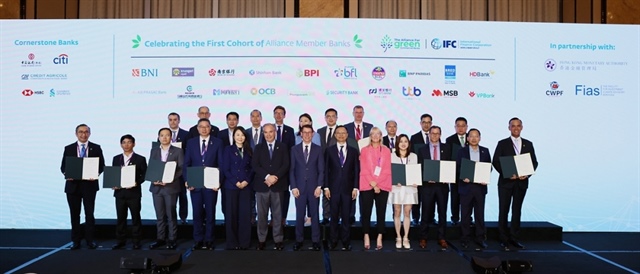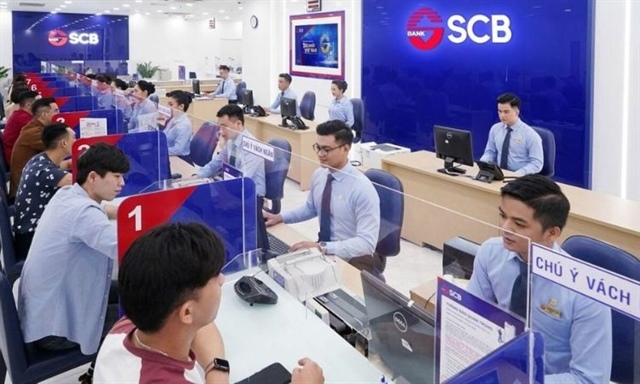Moody's assigns first time ratings of B3/Not Prime to Vietnam Prosperity Bank; stable outlook
Moody's assigns first time ratings of B3/Not Prime to Vietnam Prosperity Bank; stable outlook
Moody's assigns first time ratings of B3/Not Prime on long/short term foreign/local currency deposits of Vietnam Prosperity Joint Stock Commercial Bank (VP Bank). The rating reflects: 1) The bank financial strength rating (BFSR) and baseline credit assessment (BCA) of E/caa1, and 2) a moderate support from the government of Vietnam (B2 stable). All ratings carry a stable outlook.
Ratings rationale
VP Bank's BCA takes into consideration VP Bank's growing franchise with a focus on the retail and SME markets, relatively advanced governance standards, and progressive management plan to modernize credit risk management and operational controls. The BCA also reflects the bank's need for external capital, exposure to other Vietnamese banks, and aggressive turnaround plan, which involves inherent execution and asset quality risks.
Established in 1993, VP Bank is primarily focused on retail and SME customers. The bank's total asset of VND103 trillion (US$4.9 billion) positions it as a mid-tier joint stock commercial (JSC) bank in Vietnam. The bank has a nationwide branch network, but its traditional strength has been in the north.
Based on reported loans only, VP Bank's current loan mix is 48% retail, 43% SME, and 9% corporate. Among Vietnamese banks we rate, VP Bank has one of the lowest loan exposures to SOE, which accounts for only 3% of its overall loan book. VP Bank's retail banking strategy targets residents of Ho Chi Minh and Hanoi with monthly income of between US$225-749. More than 90% of its loan to this segment is secured by property assets. Mortgage loans account for 44% of the retail book, with loan-to-value of 60-70% for a new mortgage loan.
In addition to loans, VP Bank has rapidly grown its deposit base, which grew by over 100% between 2011 and 2012, and 29% in 2013 year-to-date. Factors contributing to growth include a market-wide shift into deposits from investments in securities and real estate, as well as the bank's own expansion strategy.
Like other banks in Vietnam, VP Bank faces a rising asset quality problem, compounded by poor reporting practices among domestic borrowers. VP Bank had total non-performing loans of 2.7% of gross loans in 2012. Including special mention loans, total problem loans constituted 10.7% of total gross loans at the end of 2012. We adjust the reported NPLs ratio to include special mention loans because restructured loans are commonly categorized as special mention loans in Vietnam.
Interbank exposures are 26% of VP Bank's total assets and 26% of total liabilities as of 2012. A substantial portion of interbank exposures represent lending on the interbank market, which provides narrow and volatile margins. However, we view potential counterparty credit risk as a greater concern than profitability, given the high degree of interconnections between Vietnamese banks. The connectivity implies that riskier banks can transfer liquidity and credit risk to the entire system, when counterparty's exposure to these troubled institutions is unknown.
Based on reported numbers, VP Bank's current capital ratio provides some buffer for existing special mention and non-performing loans. Assuming write-offs are taken to reduce the adjusted NPL ratio (including special mention loans) to 2%, while maintaining a 70% coverage ratio, VP Bank can sustain a 9% Tier 1 ratio. Further capital will be required to fund growth, which may be sourced from foreign strategic investors.
VP Bank's global local currency (GLC) deposit rating is B3, based on our assessment of a moderate probability of systemic support from the government of Vietnam, given the VP Bank's relatively large scale (ranked 6th among private JSC banks in terms of total assets) and the high level of interdependence in the banking system. The assessment of anticipated systemic support provides a one-notch uplift for its GLC rating from its BCA of caa1.
VP Bank's baseline credit assessment could be under an upward pressure if there is a substantial capital injection that would provide a sufficiently robust base to support prospective growth for 18-24 months when also considering a reasonable amount of earnings and credit costs.
Like other Vietnamese banks, VP Bank faces the same systemic issues, therefore a more rapid reform program from the government of Vietnam that leads to a clearer path towards recapitalization of the banks, greater transparency and more effective risk management could have positive rating implications for the bank. In addition, a significant decrease in exposures (including loans and investments) to other banks as a proportion of total assets, a continued growth in deposit base, accompanied by significantly lower reliance on interbank funding, and a more moderate growth rate that results in more conservative capital consumption, could be positive for VP Bank's ratings. In addition, a substantial increase in the bank's risk absorption buffers, i.e. Tier 1 Ratio and provisions, could also lead to a rating upgrade.
Conversely, the baseline credit assessment of VP Bank would be lowered - to the "ca" category - if it became clear that the Bank was only avoiding default due to extraordinary systemic support. The deposit and debt ratings could be lowered if there are signs that support may not be forthcoming to the extent that is required to restore economic solvency.
moody's























